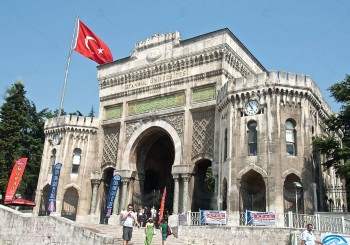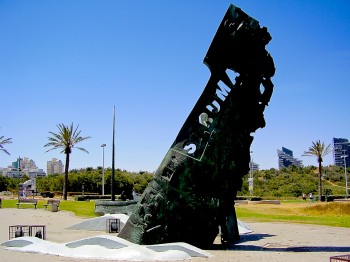“We can never move forward unless we see ourselves for what we are, until we accept that we still live with the vestiges of our most primitive reptilian ancestors. There’s a crocodile lurking within all of us, just below the placid surface of our civility, ready to lunge at the first hint of threat.” – Maya Duran, in opening chapter.
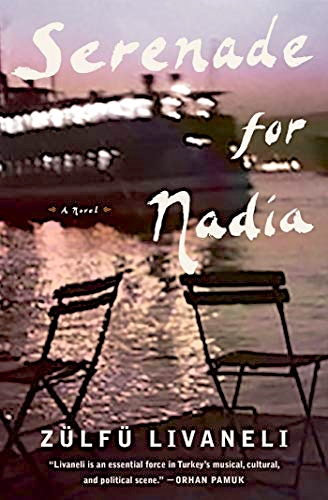
This deeply affecting and love-affirming novel by Turkish author Zülfü Livaneli, filled with the trauma and guilt of World War II, is a powerful story based on a true, nearly unknown tragedy, the sinking of the Struma, an old cattle ship carrying almost eight hundred Jewish refugees in December, 1941.
Leaving Romania and headed for Palestine, the Struma was the last “refugee ship” to leave Europe during the war – and it was overcrowded, underpowered, and unsafe. Barely arriving in Istanbul after a three-day delay and several engine failures, it waited with all passengers onboard for seventy days, everyone desperate to obtain the necessary visas for Palestine. The British, governing Palestine under a mandate from the League of Nations, were unwavering in their refusal to grant the visas, however, forcing the refugees to remain on the breaking-down ship with almost no food, water, or sanitation. The Turks, too, feared that the almost eight-hundred passengers would become the responsibility of Turkey if they were released. Returning them to Romania was out of the question. Finally, with the Turks and the British at an impasse, the disabled ship and its passengers were towed out of the harbor into the Black Sea and abandoned. The following day, a torpedo, fired by a Russian submarine, obliterated the ship, killing the entire crew and all passengers but one. This sole survivor, a nineteen-year-old man named David Stoliar, eventually received his visa to Palestine, but said almost nothing about the disaster during most of his life, until, after almost sixty years, he was asked in 2001 to participate in a documentary produced by the Associated Press.
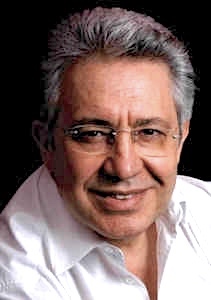 Ten years later, Stoliar’s story also inspired Zülfü Livaneli, one of Turkey’s most popular authors, to write this book, bringing the little known tragedy of the Struma into the lives of his readers and, now, into the lives of English-speakers. Instead of concentrating on David Stoliar, however, author Livaneli, also a social critic and human rights activist, takes a bigger view, providing two overlapping fictional narratives, one from 1938 – 1942, and the other from 2001. These provide the background to the very real disaster of the Struma, one that English-speakers, and probably many young Turks, have never heard before. His characters, though fictional, behave with all the emotion and feeling that any sensitive human would have in response to such a disaster and allow the author to raise questions about these events and note some of the long-term personal effects of the disaster on some families.
Ten years later, Stoliar’s story also inspired Zülfü Livaneli, one of Turkey’s most popular authors, to write this book, bringing the little known tragedy of the Struma into the lives of his readers and, now, into the lives of English-speakers. Instead of concentrating on David Stoliar, however, author Livaneli, also a social critic and human rights activist, takes a bigger view, providing two overlapping fictional narratives, one from 1938 – 1942, and the other from 2001. These provide the background to the very real disaster of the Struma, one that English-speakers, and probably many young Turks, have never heard before. His characters, though fictional, behave with all the emotion and feeling that any sensitive human would have in response to such a disaster and allow the author to raise questions about these events and note some of the long-term personal effects of the disaster on some families.
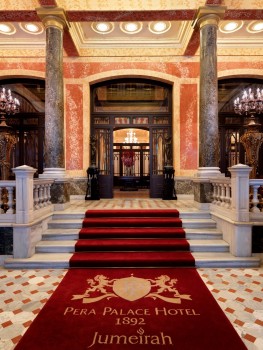
The Pera Palas Hotel, built in 1892, was a favorite memory of Max from his visit to Istanbul 58 years ago.
Zivaneli’s main contemporary character, thirty-six-year-old Maya Duran, a single mother of a teenager, is intriguing from the opening chapter, in which she indicates that she has three other first names, and that she is Muslim, Jewish, and Catholic. “In other words, I [am] a human being.” She is on a flight from Istanbul to Boston, where she intends to meet with Maximilian Wagner, an 87-year-old German professor at Harvard whom she had met and greatly admired three months previously in Istanbul. It is Maximilian’s past which becomes, through lively flashbacks, the crux of this novel, as his recent trip to Istanbul was his first trip back since 1939 – 1942. His brief return to Istanbul was very much a reliving of the past. Staying at the Pera Palas Hotel, where he stayed in the early 1940s, he notes the changes which have taken place in the neighborhoods and around the city, though the hotel has not changed.
Maya, who works for the rector of Istanbul University and served as guide for Max on his previous trip, immediately notes that from the time she picked up Max at the airport on this trip, they have been followed by three men. The next day, she and the professor take a car to Sile, on the Turkish coast, where he asks to spend some time alone on the top of a ridge overlooking the water. There he tosses a wreath into the sea below, takes out his violin, and plays “an exquisite, lyrical melody” that reminds Maya of Schubert’s Serenade. Each time he reaches a certain point, however, he stops, then starts again, a problem which becomes increasingly alarming to Maya, as the professor suddenly looks “deathlike.” She sees that he is turning cold and very white, and the car which brought them to the coast will not start. When Max unexpectedly races toward the water, she stops him with difficulty, becoming so alarmed for his health that she decides they must stay in a nearby motel until they can leave safely. They have been followed, once again, even to this remote place.
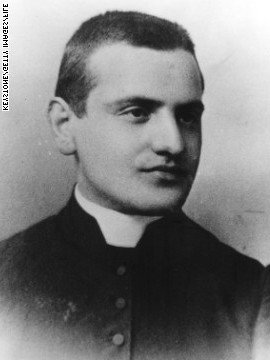
Fr. Angelo Giuseppe Roncalli, later Pope John XXIII, worked to help Jews obtain baptismal certificates to avoid the Nazis.
When Maya consults her brother, a colonel in the army, about the potential danger, he suggests that “the professor might stir up the past and bring a crime to light,” and he is particularly concerned because the men following her and Max “know about our grandmother…[who] has tainted blood.” Further developments show that Maya’s grandmother was a “Crimean Turk,” wanted by the Soviets and threatened with death because she helped Germany against the Russians. As the action evolves, Maya gradually begins to see political parallels between Turkey in the present and some of the early stages of Nazi Germany, and when Max finally begins to tell his own story, he reveals a passionate, but complicated, love story with Nadia, beginning in 1934. Ultimately, it falls to Maya to write his story, a separate section entitled “Maximillian and Nadia’s Story,” written with Max’s endorsement. Within this story, she includes many of the familiar aspects of pre-war German/European history, while also developing the story of Max and Nadia and their Aryan/Jewish marriage. Fr. Angelo Giuseppe Roncalli, later Pope John XXIII, participates in the story briefly, saving many lives by providing secret baptismal certificates to Jews. Other subplots add to the fast action and excitement.
Throughout in this complex and enlightening narrative, Zulfo Livaneli emphasizes “story,” keeping the reader involved throughout, even as new aspects of Turkey’s involvement in the war are revealed. Anti-British sentiment regarding the situation for refugees in Palestine is matched by anti-Russian sentiment regarding the horrific bombing of the Struma, but the novel never dissolves into propaganda or feels as if the author’s purpose is to “even the score.” This is, ultimately, a love story, one that comes with a vivid historical setting, believable characters, constant action, and a narrative which moves around in time through the worst, previously unimaginable, horrors of war, a narrative in which love still, somehow, survives.

David Stoliar, the only survivor of the Struma disaster. See link in photo credits to hear his 2001 interview (in English).
Photos. The author’s photo appears on https://www.discogs.com
The Pera Palas Hotel is featured on https://www.pinterest.com
Istanbul University, an Alamy photo, was found on https://www.alamy.com
Fr. Angelo Giuseppe Roncalli, later Pope John XXIII, worked to help Jews obtain baptismal certificates to avoid the Nazis. https://www.catholicireland.net
A Memorial to the victims of the Struma disaster has been created in Ashdod, Israel. https://commons.wikimedia.org
David Stoliar, the lone survivor of the Struma disaster is photographed here: https://encyclopedia.ushmm.org
For anyone interested in hearing an interview with David Stoliar, the only survivor of the Struma in 1941, a copy is located here: https://encyclopedia.ushmm.org Scroll past the map to the second entry.
